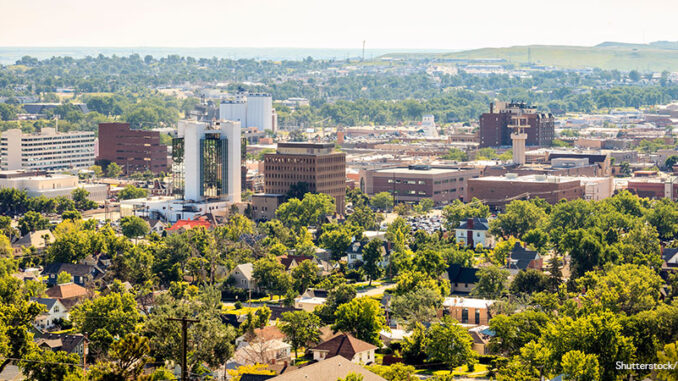
Plant a Tree, Save a Life?
We all know that trees are important, right? They remove carbon dioxide from the air, provide us with oxygen to breathe, and give us shade on hot summer days. Studies show that trees also provide us with health benefits by lowering our rates of stress and heart disease. But even so, statistics indicate that urban areas are still losing trees at a rapid rate. And even worse, they are losing them the fastest in low-income neighborhoods. That raises the surface temperature of these neighborhoods. That’s a big problem because people who live in these neighborhoods often don’t have air conditioning or access to a swimming pool or other cooling source, which can lead to deadly situations.
So why not just plant more trees? Unfortunately, solving the problem will be more complicated than that. For one thing, as the population in urban areas continues to grow, there is less and less space in which to plant trees. There are also natural challenges to maintaining tree cover–such as natural disasters and invasive species. And let’s not forget that there’s no “quick fix” to the problem of tree cover: even if thousands of new trees are planted every year, it will still take them decades to fully grow. But most of all, planting and maintaining trees is expensive, and many cities can’t afford it. This is especially true in cities that have already made budget cuts to programming for financial reasons, and where citizens can’t afford to pay higher taxes for a tree maintenance program.
Dig Deeper According to the U.S. Forest Service, the United States loses about 28.5 million trees per year. Assuming this trend continues, how many trees will be lost by the time you graduate from high school?
Hurricane Dorian Ravages the Atlantic
Last week, Hurricane Dorian destroyed huge portions of the Bahamas as a Category 5 hurricane. It was the strongest storm to ever make landfall there. For nearly two days, the storm hovered atop the islands, bringing heavy rain and high winds, and putting huge portions of the islands underwater. As of the weekend, the death toll there had risen to 30, but hundreds of people remain missing and so the death toll is expected to increase drastically. Meanwhile, entire neighborhoods have been wiped out, as well as the international airport on Grand Bahama Island, which is a big problem because it will be harder to deliver aid and supplies to the survivors without an airport.
After leaving the Bahamas, Dorian continued its path up the eastern coast of the United States as a Category 1 hurricane, leaving five people dead in the Carolinas and Virginia before traveling north to make landfall at Cape Hatteras near the Outer Banks, a popular vacation spot, on Friday morning. Hurricane Dorian’s arrival caused widespread flooding, heavy rainfall of up to 15 inches in some places, and 95 mph winds. It even spawned nearly two dozen tornadoes. Hundreds of thousands of people on the East Coast are still without electrical power. Even worse, hundreds of people who didn’t heed evacuation warnings could be trapped on Ocracoke Island, where waters are rising quickly and residents have had to climb to their roofs to escape the flooding.
Dig Deeper Using Internet resources, find at least three ways that people in the United States can help send aid to survivors of Hurricane Dorian.
Walmart Changes the Gun Conversation
A month after 22 people were killed in a mass shooting in a Walmart in El Paso, Texas, Walmart has decided to do something about gun violence. And the company is starting by addressing the problem in its own stores.
From now on, people won’t be allowed to open-carry their guns unless they are trained law enforcement officers. Furthermore, Walmart will stop selling ammunition for handguns and short-barrel rifles. (The company will also stop handgun sales in Alaska, the only state where this still happens.) Currently, Walmart holds about 20 percent of the market share in ammunition sales, but this will drop them down to about 6 percent.
But the company isn’t stopping with its own stores. Walmart also announced that it will put pressure on Congress to increase background checks and ban assault rifles.
Why does this matter? Because Walmart is the largest retailer and the largest private employer in the United States, and as such, it has a huge impact on the American economy. This policy change shows that the company is listening to the growing trend of Americans who have had enough of mass shootings and want to see increased gun safety measures. Gun rights supporters have warned Walmart that they will lose significant business over the decision. But Walmart has taken pro-gun safety measures in the past, such as raising the minimum age to buy a gun to 21, and refusing to sell assault-style rifles, all without any significant impact to business.
What Do You Think? Do you think that Walmart did the right thing by instituting these new policy changes in the wake of the El Paso shooting? Why or why not?
YouTube Pays Big

Watching a quick YouTube video is totally harmless, right? As it turns out, YouTube will have to pay a huge fine ($170 million, to be exact) for harvesting information from children who clicked on its videos.
Here’s what happened: when children watched videos on channels directed at kids, YouTube tracked them. However, YouTube neglected to get permission to do this from parents first, which violates privacy laws that protect children. YouTube then took the personal information it had gathered and used it to make millions of dollars by targeting ads to the children. As a result, YouTube and its parent company Google will now have to pay $136 million in fines to the Federal Trade Commission (FTC), and $34 million to the state of New York, who originally brought the lawsuit.
In the next four months or so, YouTube will begin requiring companies that put content on YouTube to say whether what they’re posting is aimed at children. Anyone who views this content–whether children or adults–will have his or her privacy protected as if they were children. YouTube will also create a $100 million fund for creating original children’s content. Advocates for children’s privacy rights say they hope these changes will ultimately bring about less advertising aimed specifically at children, and focus more on creating quality viewing content for kids.
